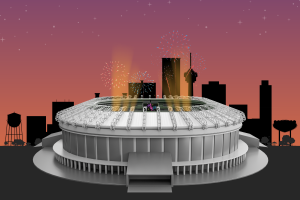In the past few months, an unknown object from deep space raced around the Sun, as close as Mercury’s orbit, before curling around and speeding back off into the void. This object’s extremely unusual angle and its incredibly high speed have made some think that the object is in fact a visitor from outside our solar system. In accordance with this significance, and also in accordance with astronomers’ world-renowned naming creativity, the object has been given the truly memorable name of A/2017 U1.
That sounds like the work of alien intelligence, but in reality, A/2017 U1 is almost certainly something entirely natural. It is thought to be common for small objects such as asteroids or comets, especially those on long-period orbits that stretch well out into the outer solar system, to be gravitationally manipulated in such a way that they are given enough speed to escape the Sun – effectively being ejected from the solar system.
The early days of our own solar system, when various random pieces of debris collided to form the planets, were incredibly chaotic, and it is thought that a lot of material was ejected in such a way at that time. We’ve known that planets exist in other star systems for decades now; we’ve also been able to see planets forming in other star systems that are far younger than our own. So it is only natural that those other star systems would eject copious amounts of their own debris. While space is immense and most of these objects may spend an eternity aimlessly drifting, it makes statistical sense that at least one would find its way to our solar system in time.
It is possible that A/2017 U1 is actually just another object from the Oort Cloud, a vast field of comets that has not been directly observed but is believed to extend as much as a whole light year from the Sun. Comets originating from the Oort Cloud also have extremely long-period, eccentric orbits. However, if A/2017 U1 were a comet, then we would be able to see signs of its ice melting as it comes closer to the Sun, forming a sort of cloud. We haven’t been able to see those signs, so it is believed that the object is asteroid.
Assuming that A/2017 U1 is in fact what we think it is, a temporary guest in our solar system from somewhere else, then what does it mean? The solar system is already immense, and we may think of the far, far vaster space beyond that as static and unchanging. But even small things such as A/2017 U1 show us that the space beyond can and does throw surprises every so often.











